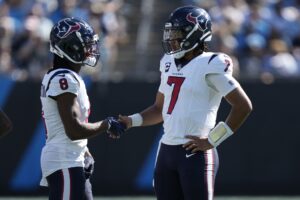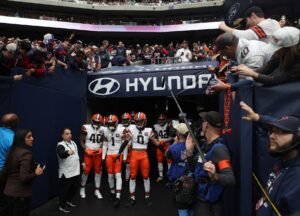An incredibly one-sided debate over whether running backs are an important position in the NFL has raged for quite some time now. All of the data points towards the same conclusion: running backs do not matter. There are two layers to that argument. The first one is that running the ball is simply not effective. Instead of targeting a great running back in order to improve your run game, it is wiser and infinitely cheaper to simply just throw the ball more. The second layer is that even if the run game was effective, a running back is a result of his own environment. It’s not that the running back is not talented, it’s that there is a surplus of talented backs who will put up essentially the same production. When a running back takes a handoff, there are no legitimately discernible skills that separate him from other backs. The difference in applicable skills between a practice squad rookie and a guy like Saquon Barkley is essentially non-existent.
NFL Running Backs Value Breakdown
Receiving Running Backs Matter
The caveat to that is the fact that receiving backs can matter. Generally, running back targets are still not very efficient. However, there is an inherent selection bias to those claims, considering that quarterbacks under duress will tend to dump it down to their running back, lowering efficiency. There is some value to running backs who catch passes. Austin Ekeler and Christian McCaffrey are especially good at this, ranking one and one respectively in PFF receiving grade for running backs since 2017. The below numbers illustrate this.
https://twitter.com/GavinRodLWOS/status/1309935453592784896
As shown by those numbers, McCaffrey and Ekeler are especially efficient with a pretty high volume. McCaffrey averages around 0.25 EPA/target while Ekeler averages 0.30. Since 2017, only the Kansas City Chiefs have a higher EPA/dropback than McCaffrey, at 0.262. In regards to rushing the ball, it is obvious that running is not effective. Only two running backs have a positive EPA/rush. One of them is New Orleans Saints standout Alvin Kamara, and the other is Green Bay Packers running back Aaron Jones.
Comparing Environments
From 2017-2019, Jones added around 13.5 expected points when he ran the ball. Kamara, mainly on the back of an incredible 2017 season in which he averaged 6.1 yards per rush, has added around 12.1 expected points. On lower volume, Jones has produced more in the run game than Kamara. But how much of that did he control?
Without Kamara’s production included, the Saints rushing offense cost them 30.58 expected points, which would put Kamara at +42.6. When the Packers didn’t have Jones on the field, they lost 53.11 expected points. With Jones having 13.5 points added, that would put Jones at +66.61, easily the highest total in the NFL.
Pro Football Focus helps confirm this. In terms of run blocking grade, the Packers ranked 20th in 2017, 23rd in 2018, and sixth in 2019. Their average grade was 64.1. While the Packers offensive line is easily the best pass blocking unit in football, arguably a result of an unfair style of play, their run blocking fails to perform at a consistently high level. The Saints, on the other hand, ranked 10th in 2017, 17th in 2018, and fourth in 2019. Overall, their average grade was 67.8, which is a significant over what Green Bay offered.
Last Word
Alvin Kamara and Aaron Jones are the only two running backs that have added positive value in the run game since 2017. Kamara’s value is heavily skewed because of his absurd 2017, and he has cooled off since. Jones, on the other hand, seems to be sustaining his success. Against the Detroit Lions last Sunday, he averaged an absurd 9.3 yards per carry and 0.45 EPA/rush attempt. Despite middling offensive line performance, Jones continues to produce.
Still, it is not like Jones is one of the most valuable assets in the NFL. Despite being the best of the best, he has still only added two touchdowns in surplus value in three full seasons. In an ideal NFL world, Jones would be considered a decent utility player. However, the NFL is not ideal. Teams still run the ball way too much, and it will be a while until that changes. In the mean time, having Jones on the roster, while not the best approach, will result in a huge boost for the offense. The EPA on an average run play is still well below zero, so going from horribly inefficient to somewhat efficient is a significant increase in offensive productivity. In conclusion, Aaron Jones does, in fact, matter.
Main Photo






